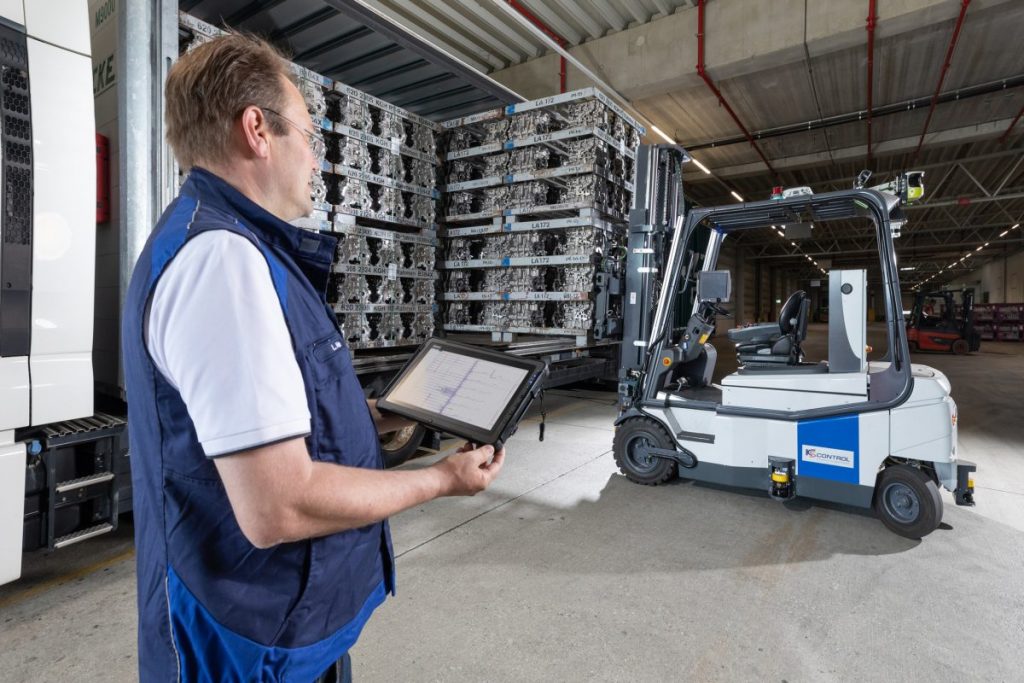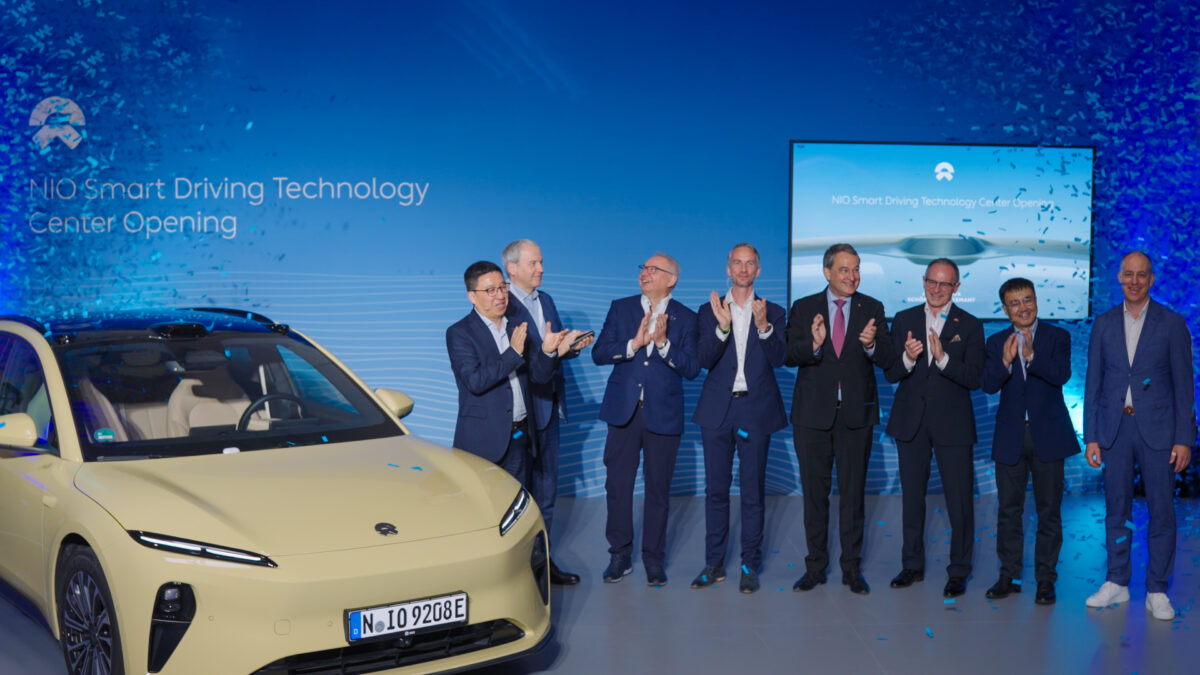The last couple of years have been extremely disruptive across industries, and automotive is no exception. Now, as automotive manufacturers plan their path to recovery and renewed profitability, they’re evaluating new ways to build-in higher levels of resilience across their operations. Their goal: to ensure they can better navigate and thrive through unexpected global events.
To get from where they are today to where they want to be tomorrow, leading automotive manufacturers are accelerating their digital transformation and evolution to realize Industry 4.0 levels of efficiency and productivity. They know that digital technologies, automation and real-time data are key to building faster, more robust processes that bend, but don’t break, in the face of operational and financial challenges.
Industrial-grade private wireless is essential for resilient operations
A 5G private wireless network provides the foundation for digital transformation. It connects people, systems, equipment and devices to power many of the technology solutions automotive manufacturers need to increase resilience across their operations.
It is a high-speed cellular network that is fully dedicated to the manufacturer’s unique operation. But it is not like the public 5G cellular networks used to access at home or while on the move. The network is industrial-grade 5G—designed and built to deliver fast and reliable wireless connectivity in equipment-heavy industrial environments and across industrial complexes and campuses of all sizes and types, even in harsh outdoor or isolated environmental areas like painting operations or hazardous waste removal.
A 5G private wireless network keeps R&D teams connected to the factory, finance and admin teams connected to the warehouse, and dealer liaisons connected to retailers, all with the most current data
A 5G private wireless network offers the best of the wired and wireless worlds: the speed, reliability, low latency and security of a wired network with the flexibility and mobility of a wireless network. Handovers between wireless access points are seamless so there are no connectivity interruptions that could affect efficiency or safety. And the network is easy to scale, allowing for smooth support of new technologies and applications.
For those that think their Wi-Fi network is adequate to support digital transformation initiatives, it may not live up to digitalisation expectations. Wi-Fi is best-effort technology, and it’s not a robust mobility solution. It simply can’t deliver the combination of capabilities needed for resilient operations: High speeds, low latency, seamless coverage, predictable and pervasive performance, quality of service, traffic prioritisation and zero-trust security.
Define what resilience looks like
It’s easy to say that accelerating digital transformation will help automotive manufacturers evolve to stronger, more flexible and adaptable processes that will increase resilience. But, exactly how does digital transformation increase resilience? And where should automotive manufacturers focus their transformation efforts today, and in the future?
The answers to these questions depend on several factors, including: where facilities are located and the markets served; the production technologies in use today and a company’s goals for ongoing digitalisation and automation; the number of staff employed, their current skill levels and their potential to adapt to new ways of working.
As businesses delve deeper into what resilience means for them, they need to look beyond the factory to consider all aspects of the operations, including supply-chain, retail outlets, warehouses and offices. True resilience in the automotive industry covers many things: including the ability to get new offerings to market faster by accelerating productivity end-to-end across facilities and sites; sharpen competitive edge by increasing quality without sacrificing efficiency or productivity; meet new market needs, such as demand for hybrid and electric vehicles, and more advanced in-vehicle features, by quickly and easily adapting end-to-end operations; maximise uptime by anticipating and proactively resolving issues with systems and equipment; and maintain productivity despite worker shortages by automating tedious and time-consuming tasks. It can also facilitate faster, more informed decisions by leveraging real-time data and clear operational visibility; reduce the risk of injuries by reducing human involvement in potentially hazardous tasks and ensuring instantaneous safety system responses; cut the risk of security breaches by accelerating situational awareness; and evolve to more sustainable and cost-efficient operations by reducing power consumption, waste and travel.

Start with top priorities and evolve from there
With high-speed, high-bandwidth wireless connectivity available throughout a factory, companies can immediately implement top priority applications to increase digitalisation and automation of operations. While each manufacturer will have its own priorities, there are common use cases.
In one example on how digitalisation increases product quality, many automotive manufacturers are looking to take advantage of connected screwdrivers that automatically adjust torque for different steps in production to ensure engineering quality requirements are followed. Another example are autonomous mobile robots (AMRs) that efficiently transport goods wherever they’re needed in the factory. They’re also prioritising positioning applications that accurately track the location of workers, equipment, assets and parts throughout their facilities. And they see the opportunity to efficiently deliver data updates over the air in “data showers” to manufactured vehicles.
To increase production flexibility with lower risks and less waste, manufacturers are using digital twin technologies to simulate production changes before they’re implemented. They’re also focusing on collaborative and remote-controlled robots that increase productivity while reducing worker strain and the potential for injury; high-definition video cameras for quality inspections and security surveillance; IoT sensors that monitor equipment performance to enable predictive and preventive maintenance strategies that help avoid downtime; and augmented and virtual reality (AR/VR) solutions for worker training and equipment maintenance tasks
Make retail sites an extension of the factory
Most of the use cases implemented at the factory can be extended to retail operations. Now automotive service managers, technicians and sales staff can keep pace with evolution at the factory, and ensure customers enjoy an efficient and positive experience.
Adding digital technologies and automation at retail sites creates new opportunities to differentiate speed and quality in a highly competitive industry. For instance, connected tools accelerate maintenance tasks while ensuring quality results. AMRs put the right spare parts at technicians’ fingertips, while the right tools and technicians for the job are always easy to find. Machines help technicians safely and efficiently move and install large and heavy vehicle parts. Even large software updates to vehicles happen quickly and at the convenience of the customer. Valuable maintenance equipment can be proactively serviced before it breaks down. Staff have instant, visual access to the information and guidance they need to complete new and challenging tasks, and physical space can be optimised for more efficient operations and smoother movements of people and vehicles

Strengthen everything in between the factory and retail
A 5G private wireless network keeps R&D teams connected to the factory, finance and admin teams connected to the warehouse, and dealer liaisons connected to retailers, all with the most current data.
Like retail sites, warehouse and logistics facilities can also benefit from some of the same technologies as the factory: AGVs to efficiently move parts, tracking for people, parts and finished vehicles, and HD video surveillance are good examples. They also benefit from automated picking systems, real-time visibility into inventories in the warehouse and at suppliers, and automated purchasing based on that data.
Leading automotive manufacturers, including Volkswagen, Nissan and Toyota Production Engineering Corporation are already using 5G and 5G-ready private wireless networks to accelerate their digital transformation. They’re joining companies across manufacturing domains and across industries—from utilities and transportation to education and smart cities—that are using 5G private wireless networks to reinvent the way they work with resilience and sustainability at the core of their efforts.
About the author: Stephan Miller is Head of Global Automotive Industry for Nokia



